December 6, 2022
Several years ago, I found myself weeping like a baby at the end of a two-hour breath work and sound therapy session on a sound healing table with a healer named Porangui in Sedona, Arizona, who also blasted me with instruments like didgeridoos and drums during the treatment.
Now if you hear that, and your woo-woo radar goes off…well, I can't blame you. Tuning forks, drumming, chanting, neuroacoustic tables, singing bowls and other sound healing tactics just don't seem to be up there with other alternative healing modalities such as acupuncture or cryotherapy or electrical treatments in terms of mainstream acceptance.
However, sound healing has been around since ancient times, and the science behind it is actually pretty solid, including the crazy (but proven) idea that nerves transmit sound through your body. Many medical conditions can be supported or improved by sound frequency medicine. As research continues to be conducted and published on sound therapy, scientists and practitioners are gradually learning how to tap into sound's healing potential.
Since 2017, I've been writing and podcasting about sound therapy (and I suppose that since I began playing the violin at age 5, I've had a keen interest in string theory, sound, and vibration since a very early age!). Not only do I own a fancy neuroacoustics mat by Biomat that I use frequently for massage treatments and sound healing “journeys,” but I also frequently play a “handpan,” which is a vibrating drum-like device I can place in my lap for playable sound therapy, and I devoted a section in my book Boundless to how sound can improve your mood, move you from a sympathetic (“fight-or-flight”) state to a parasympathetic (“rest-and-digest”) state, and introduced sound's potential to heal conditions ranging from cancer to arthritis to autoimmune disorders.
Now, as a part of my quest to introduce you to the magic of sound and its effects on the body, I'm about to introduce you to a very interesting guy in the realm of sound medicine.
He is a recent acquaintance of mine and his name is John Stuart Reid. John is a world-renowned acoustics scientist. In 1997, during acoustics experiments in the Great Pyramid, what seemed like a miracle occurred to John. He had walked (or more accurately, crawled) into the pyramid in severe pain, due to a back injury sustained three weeks earlier. Within 20 minutes of beginning acoustics experiments, which involved making sound in the King’s Chamber of the Great Pyramid, all the pain left him. It never came back. And so began John's 20+ year quest to discover how he was seemingly miraculously healed.
A result of that journey is that John after many years of researching sound began to actually teach about sound therapy. John even recently put together a free online training (register here if you're interested). By taking this unique training, you can:
- Learn how sound creates infrared light, which powers the structured water-building mechanism in cells, which in turn powers your biology
- Watch a profound experiment with pure water, which reveals how the cells of your body are powered by life-giving electricity
- Explore some of the many medical conditions that can be supported by frequency medicine in the form of light therapy
- Discover how some tracks of music automatically generate the ELF acoustic energy needed for optimal vagus nerve stimulation
- Discover how you can boost your immune system, bring light and balance to your bodily systems, and activate your capacity to heal at a cellular level
As you probably know, I feel strongly that it's important to understand the foundations of any practice, theory, or belief system. John's course covers what you need to know about sound therapy to grasp its science and applications for healing. The following article written by John is the first installment in a special two-part series I'll be featuring that covers the historical perspective of sound therapy and goes into present-day research while defining the related disciplines of music therapy and music medicine. The next article in this series that will come after the one you're about to read (Sound Therapy “201”) introduces the biological mechanisms that underpin sound therapy and the applications for healing.
So here we go: listen up!
The History of Sound Therapy
Several ancient cultures used the seemingly “magical” power of sound to heal.
However, sound therapy had almost disappeared in the West until the 1920s.
In 1927, Professor R. Wood and his assistant, Loomis, discovered ultrasound – high-frequency sound – and its medical properties. With this discovery, research burgeoned, and it is now established fact that ultrasound has powerful medical properties including its use in breaking up kidney stones and even shrinking tumors. In hospitals and sports injury clinics, in all parts of the world, therapeutic ultrasound is used to support or accelerate the healing of soft tissues and broken bones.
A year later, in 1928, Professor Erwin Schliephake, a German scientist who began his career at the Physiological and Physiological Chemical Institute in Leipzig, discovered that audible sounds created therapeutic effects. His research led to the development of the “Novasonic,” a hand-held device that emits mainly low-frequency sonic vibrations and is still manufactured today.
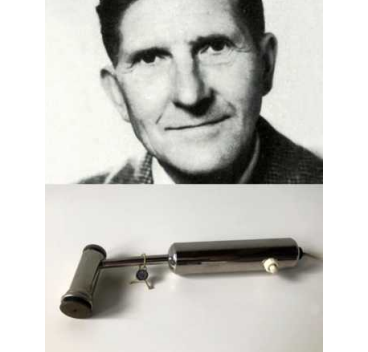
Professor Erwin Schliephake and the Lindacher “Novasonic” device inspired by Professor Schliephake’s research
In the 1960s, English osteopath Dr. Peter Guy Manners developed a Cymatic Therapy device that proved to be effective for the support of a wide range of ailments. The name of his device was inspired by the work of Dr. Hans Jenny, the Swiss medical doctor who coined the word “cymatics” to mean visible sound (note from Ben: if you want to see cymatics in action, check out this wall poster that I had created by soundmadevisible.com that features my wife and I saying “I love you” to each other, made visible by CymaScope technology). John Stuart Reid then interviewed Dr. Manners at his clinic in Bretforton, England, and learned that the frequencies used in his cymatic device were the result of research carried out by a team of German physicists employed under the Nazi regime.
An elderly German physicist gifted research documents to Dr. Manners in the late 1940s, following the end of World War II. Dr. Manners held several awards, including the Dag Hammarskjold Merit of Excellence for benefits to humanity and Academie Diplomatique (De La Paix), as well as the Diploma of Honour in Bio-energetic Medicine (Moscow) for his contribution to research and development of bio-magnetic medicine.
Dr. Manners died in 2009, but a few years before his death, he arranged for a US-based company, Cymatherapy International Inc, now known as Cyma Technologies Inc, to take his work forward. They are one of several organizations that have developed audible sound devices to support a wide range of physical ailments. Some of these devices include:
- The AMI 500: This is a therapeutic sound instrument that comes in the form of a handheld device for use in the oxygenation of cells, dental health, cleansing of the body’s toxins, and generating vital energy for both men and women.
- The AMI 850: This device applies sound through the portals of the feet using the meridian pathways. By utilizing tourmaline and germanium, this delivery system optimizes the health-giving benefits of all twenty channels.
The companies have documented many cases in which their sonic therapies benefited individuals. Audible sound is intrinsically safe and cannot be “overdosed,” while ultrasound, if not properly applied, can cause severe internal burning.
Yidaki (Didgeridoo): A Healing Tool
The Aboriginal people of Australia are reported to have used their “yidaki” (modern name, didgeridoo) as a healing tool for thousands of years. One ancient tradition even holds that the didgeridoo's primordial sound somehow “created” the world and everything in it, which is interesting, because the Christian idea of God “speaking the world” into existence closely parallels this concept of sound being the origin of all life.
Stories passed down through many generations of their culture tell of healing broken bones, muscle tears, and many kinds of illnesses using this enigmatic musical instrument. To my knowledge, no actual medical studies have been conducted in which the yidaki’s healing power has been thoroughly tested, although its acoustic output is in alignment with some modern audible sound therapy devices, particularly in its emitting low-frequency sounds, so it is not surprising that it has some very interesting healing properties.
Some preliminary studies of the benefits of playing the yidaki instrument have indeed been conducted, one of which is a paper in the Journal of Rural Health that concluded that yidaki playing alleviated the symptoms of asthma in school children. Another study, reported in the British Medical Journal, concluded that it helped sleep apnea.
The Origins Of Sound Therapy For Illness Support
The idea that sound (in the form of music) can be given as a therapy in support of illness is a concept espoused by Pythagoras of Samos 2,500 years ago. One of his biographers, Iamblichus, reported that Pythagoras believed that music could be used in place of medicine and that it contributed greatly to health.
According to Isocrates (436-338 BC) and other writers including Pythagoras of Samos (circa 570-circa 495 BC) who traveled in Egypt and absorbed knowledge from their priest-scientists. Pythagoras later founded an intellectual community on the island of Croton, Italy, and Iamblicus tells us that his followers numbered 218 men and 17 women, all named individually, to whom he gave lectures during the day and evening. One group of his followers was known as the “Acoustici,” which means “to hear,” and from which the English word “acoustic” derives.
At that point in history, the Egyptian civilization had already spanned more than three millennia, their culture was advanced, and their knowledge of astronomy, engineering, mathematics, medicine, music, and many other subjects was well developed.
While Pythagoras is credited with the invention of the monochord, which he used for investigating harmonic intervals—its single gut string tensioned by a fixed weight, a scientific instrument rather than for creating music—the ancient Egyptians had been making and playing musical instruments since pre-dynastic times, a period stretching back millennia before Pythagoras’ visit. Therefore, it seems likely that Pythagoras would have absorbed knowledge of musical intervals during his Egyptian travels.
It also seems reasonable to hypothesize that Pythagoras’ use of “music in place of medicine” was inspired by knowledge acquired from the priest-scientists he encountered during his travels in Egypt. The Egyptians built sanatoria (hospitals) in all major towns and there is some evidence that one of their methods of healing involved sound since the mere sounds of words were considered a potent and creative force in Egypt, as noted by R.A. Schwaller de Lubicz, in his book Sacred Science.
Apart from their known use of vocal sound and conventional musical instruments such as the drum, harp, flute, lyre, and tambourine, the Egyptians also employed “sistra,” a type of rattle with metal discs, which emit significant levels of ultrasound in the 40 to 60 kHz range.
The Dendera Sanatorium features small healing chambers that would have had excellent reverberative qualities due to their parallel-facing walls and flat stone surfaces, in which instruments such as the sistra could have been used to good effect. Such small chambers would have had similar acoustics to modern-day tiled bathrooms. Each healing chamber featured a basin containing water that had been poured over a statue of one of their healing gods, charging the water, which they imbibed, with “healing energies.”
Of course, some of this could be based on the placebo effect. Research into the benefits of placebo has shown the belief in a prescribed “medicine” can have as much efficacy as an actual medicine if the patient believes it has healing qualities. The placebo medicine created by pouring water over the statue of a healing god may have contributed greatly to the well-being of Egyptian patients. But I suspect that there is more going on here than just a placebo effect.
The use of sound therapy and sound medicine has continued through the ages since Pythagoras. At Deir el-Bahari, on the west bank of Thebes, an 18th dynasty chapel was dedicated to Amenhotep, son of Hapu, a deified healing saint closely associated with Imhotep, who is largely recognized under the title “physician” and responsible for designing Djoser’s sublime Step Pyramid complex at Saqqara. Imhotep's repute was so great that 1,500 years after his death the Greeks identified him with their healing god Asclepius. Imhotep and Amenhotep-son-of-Hapu were the only two commoners deified in the history of ancient Egypt and were usually worshipped together in the same Egyptian healing temples.
Acoustics research conducted by the author strongly suggests that the Egyptians designed their chapels to be reverberant in order to enhance sonic-based ceremonies; the chapels at Deir el-Bahari, where the sick made a pilgrimage, have strong reverberant qualities and therefore it seems reasonable to hypothesize that sistra and other musical instruments, along with vocalizations, played a significant role as a healing modality in such healing chapels.
The Indian culture also has a long and rich history of using sound for healing illness, stretching back around 3,500 years. In the Vedic period, (1500-600 BCE) specific mantra chants were prescribed for specific maladies. The Ayurvedic practitioner was called “vaidya,” meaning a person of profound knowledge, who held a magical power over gods through their mantras, using this power for healing purposes.
Therapeutic ultrasound has been used in hospitals and sports injury clinics worldwide for decades to accelerate the healing of soft tissue following major physical traumas, even though the underlying biological mechanisms are poorly understood. It seems possible that the ancient Egyptians utilized the therapeutic qualities of ultrasound thousands of years before it was rediscovered by Western medicine. The fact that the ancient Egyptians had experimented with the design of musical instruments for millennia does not in itself imply a focus on controlling the acoustic environment in their sacred spaces, but many textual indicators suggest that reverberance in their temple chambers was desirable, and perhaps even essential, for their rituals. (See the cymascope.com website, Egyptology section, for textual indicators.)
Music Medicine For Health Optimization
The clinical discipline of music therapy focuses on, for example, supporting patients with depression or relieving anxiety during the pre- and post-operative phases of a patient’s hospitalization.
Music medicine is generally defined as an intervention in which “the therapist helps the client to promote health, using music experiences and the [patient/therapist] relationships developing through them.”
Many studies have been conducted that demonstrate the efficacy of music therapy, but now, interest is growing in the field of music medicine, which, as its name implies, focuses on the demonstrable benefits of music as treatment for specific health challenges; one definition is, “listening to music (for the purpose of healing) without the presence of a therapist.” In other words, the beneficial effects that the music alone creates for the patient, regardless of the presence of a therapist during the “treatment.”
Music Medicine For Coronary Disease
A Cochrane analysis of twenty-six music medicine clinical trials with a total of 1369 participants, titled “Music for stress and anxiety reduction in coronary heart disease patients,” concluded that “listening to music may have a beneficial effect on systolic blood pressure and heart rate in people with coronary heart disease and appears to be effective in reducing anxiety in people with myocardial infarction.” The same report mentioned, “Listening to music may reduce pain and respiratory rate and appears to improve patients’ quality of sleep following a cardiac procedure or surgery.”
A study by the University of Belgrade School of Medicine, led by Dr. Predag Mitrovic, involved 350 patients diagnosed with a heart attack and early post-infarction angina in Serbia. Half were randomly assigned to receive standard treatment while half were assigned to regular music sessions in addition to the standard treatment. Researchers fine-tuned the music selection by working with the patient to determine the optimal music tempo and tonality, therefore, the initial stage of the study would technically be classed as music therapy, while the major part of the study would, today, be classified as music medicine since the participants listened to music at home, without a therapist. Participants who listened to music reported less anxiety and less pain sensation than participants who received the standard treatment alone. Dr. Mitrovic concluded, “Sedative music was more effective than treatment in decreasing anxiety and pain in patients with HT (hypertension) and EPA (post-infarction angina). Patients with HT should have the benefit of using sedative music as an adjuvant to medication during EPA episodes.”
Music Medicine For Psychological & Physiological Health
Johns Hopkins Medicine also acknowledges the role of music in addressing illness and indicates a range of illnesses they aim to treat with music, including, Huntington’s Disease, Parkinson’s Disease, and Dementia.
McGill University in Montreal is also conducting studies in Music Medicine. In a meta-analysis of 400 studies, Dr. Daniel J. Levitin and Dr. Mona Lisa Chanda found that music improves the body's immune system function, reduces stress, and was found to be more effective than prescription drugs in reducing anxiety before surgery. They also found that listening to and playing music increases the body's production of the antibody immunoglobulin A and natural killer cells, the cells that attack invading viruses, and boost the immune system's effectiveness as well as reducing levels of the stress hormone cortisol.
Many other music medicine trials are ongoing around the world, including a scientific study instigated by the General Society of Authors and Editors (SGAE), in Madrid, Spain, an organization with thousands of musician members. Their study aims to demonstrate, quite simply, that music heals; the research program has begun at the University Hospital, Madrid, in Intensive Medicine, Neonatology, and Rehabilitation Services. Neurology, Hematology, and Cardiology departments will soon be incorporated into the study, which seeks to verify how live music can have positive effects on physiological and biological parameters.
As mentioned above, while music medicine is typically defined as “listening to music without the presence of a therapist,” the CymaScope lab research that I have been involved with focuses on the effects of music on blood, described in the next report of this section, may indicate the need for an expanded definition of Music Medicine. In brief, research points to the need for the entire physical body, or a specific part of the body, to be immersed in specific single frequencies (which would be termed Sound Therapy as distinct from Music Medicine), and at a specific sound pressure level.
Such sonic immersion may provide additional measurable and beneficial physiological effects, as distinct from the benefits associated with listening to music via headphones, speakers, or via live music performances. While it seems natural that live music performances in hospital wards can lift the spirit of patients and may have measurable beneficial biological effects, clearly it may be impractical to administer in busy clinical settings, whereas providing recorded music or individual sound frequencies for patients would be, by comparison, eminently
practical.
Summary
The goal of all energy medicine healing modalities is not to directly heal the body—for only the body can heal the body—but to cultivate the conditions within which your body can heal itself.
It seems there is more and more evidence that sound therapy is a valid, effective means of priming your body for healing.
The following are good resources to check out if you want to “hear” more about some of the ways I've personally played with sound:
- Sound Medicine: How To Use The Ancient Science Of Sound To Heal The Body And Mind.
- How Sound Healing Works, Why Most Music Is At The Wrong Frequency, The Best Music For Sleep & Much More With Wholetones Composer Michael Tyrrell.
- How You Can Use Sound And Music To Change Your Brain Waves With Laser Accuracy And Achieve Huge Focus And Performance Gains.
- The Unique, Next-Level Future Of Bodywork, Fascia & Massage Therapy: Ketamine, Sound Therapy, Essential Oils, Trauma Release & Beyond With Donna Mills.
- What Is Your Favorite Workout Song?
My hope is that this article has provided helpful foundational knowledge of sound therapy and music medicine. You can reference the original article here if you would like to delve further into the historical references. The next article that will come soon will expand on the biology and healing potential of sound medicine. In the meantime, if you want to learn more about the different ways that sound can promote health and wellness, then check out John's free online training, which is packed with information on the science of sound therapy, as well as lessons on how to use sound to improve your own life.
Finally, I'd be remiss not to mention that sound and music can be potent fitness-enhancing tools also. You can read more about that here, and check out one of my favorite workout music motivation lists on Amazon here.
OK, your turn! Do you have questions, thoughts, or feedback for me or John about music medicine and sound therapy? Leave your comments below, and one of us will reply!


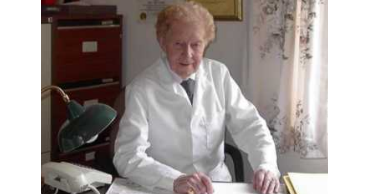

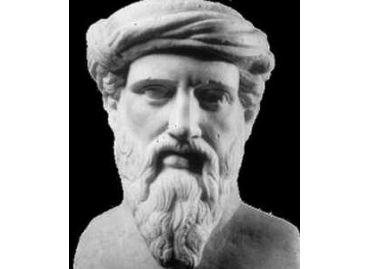
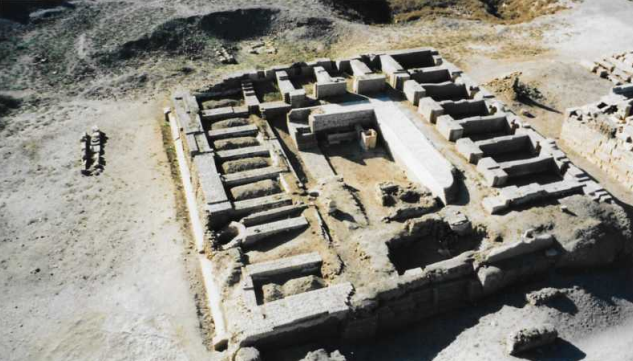
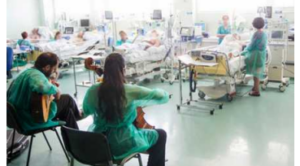
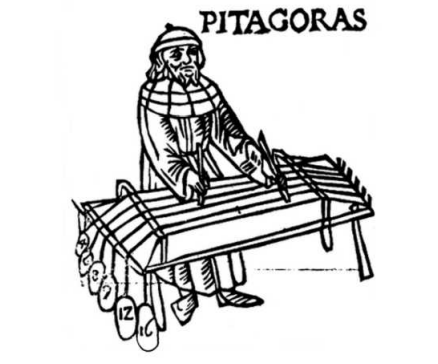
I’d love to hear a podcast with you and Dr.Caroline Stites founder of VibraGenix in Kennewick, WA. She’s devoted her life to sound and frequency medicine. My mom, sister, and I each have her machine and use it daily for fibromyalgia amongst other things. It would be an amazing podcast plus she’s close to you! Thank you Ben. Really enjoy all your content.
It’s great that you pointed out how the use of sound therapy and sound medicine has continued through the ages since Pythagoras. I was reading a magazine earlier and I saw one pretty fascinating article that talked about sound therapy. According to what I’ve read, it seems you could even get sound therapy training classes now, which sounds pretty useful.
I make music in healing frequencies. 528 hertz mostly on my new record The Rubicon is a Red River available on all the streaming platforms or you can order a CD from my website RobinKyle.com
“It was tone, it was sound that rings, out of which the human form was shaped.’
~ Rudolf Steiner
God spoke the universe into existence with the Word. Sound